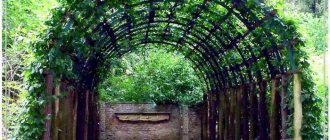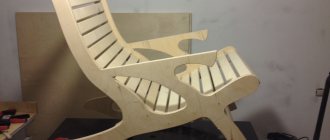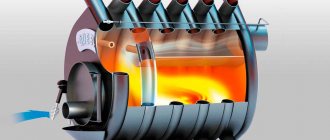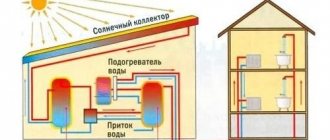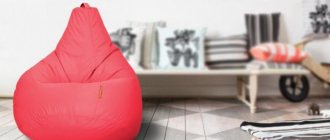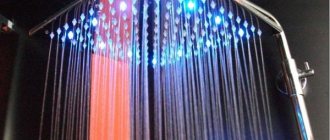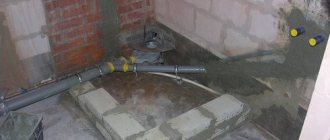A correctly chosen table lamp will not only provide the interior with lighting of the required direction and intensity, but will also become its harmonious addition and decoration. And to a large extent, the functional and artistic features of a particular lamp are determined by its lampshade. It is this element, which covers the light bulb, diffuses its light and shapes the appearance of the device, that largely determines how exactly the table lamp will look in your interior and how effectively it will solve local lighting problems. Practice shows that by replacing the diffuser, you can radically change the appearance of the lamp, so in many cases it will be more convenient to buy a separate base and a separate lampshade for a table lamp. And in order not to make a mistake in choosing, it is recommended to take into account certain recommendations and subtleties.
Safety first
Although incandescent lamps have been practically replaced by fluorescent and LED analogues, the risk of a lampshade catching fire due to the light source remains.
Therefore, before making a thematic frame you will have to consider:
- Lampshade composition – the material used should not be flammable;
- Lamp socket - ceramic models are safer than plastic ones;
- The distance between the lampshade and the lamp is at least 9 cm, subject to the previous requirements.
As a result, it is better not to use paper, cotton and synthetic fabrics at all. Moreover, no one will monitor the heating of the lampshade every day.
But with prolonged use, even a fluorescent lamp and its socket heat up. Therefore, it is better to use an LED analogue, the power of which can be adjusted.
The concept of “floor lamp” and the advantages of its use
This is a floor lamp on a small base with a high leg that ends with a lampshade. Lampshades come in cylindrical, conical, spherical or custom shapes and can be made from a variety of materials. The leg can have different heights and diameters. The entire set of floor lamps, regardless of the material of manufacture, can be divided into two large groups:
- Decorative The floor lamp is designed to create dim lighting, has low power light flux, thanks to which it creates a pleasant atmosphere that sets the mood for relaxation. Very often the lampshades and legs of such floor lamps have original forms in the form of flowers, torches, street lamps.
- Functional floor lamp provides quality, full lighting almost the entire room. Such lamps are sometimes used instead of an overhead light source. With sufficient power, they can easily provide the required level of lighting in the workplace. They often have possibility of angle adjustment tilt and rotate the lampshade and a telescopic, inclined leg.
The advantages of this lighting device over other types of lamps are obvious:
- They do not require any type of installation. The purchased model is already ready for use, all that remains is to figure out a place for it and ensure the presence of an outlet.
- At any time you can change its location or remove it altogether thanks to its mobility.
- Thanks to the floor-standing installation method, you don't need to take up extra space on your coffee table or buy a special cabinet to accommodate it, and you don't risk scratching the polished or glass finish.
- Exactly floor lamps create unique cozy atmosphere in your home and decorate the overall interior with their appearance.
Frame made from worn-out products
Making a lampshade with your own hands for a table lamp is easier if you are guided by the shape and dimensions of the supporting base. The latter can be made from scratch or from old products.
In the second case you will have to find:
- Frame from an old unnecessary lamp;
- Wire waste basket;
- Wicker basket made of plastic;
- Plastic bucket of small-medium volume;
- Plastic bottle with a volume of 5 liters or more.
The last option is the most budget-friendly and looks more like a ceiling lamp. However, even transparent plastic can turn into a lampshade after finishing with textiles.
A badly worn frame for a lampshade will have to be treated with your own hands - cleaned of rust, fastened “lame” parts, painted with fire-resistant paint.
Load-bearing base from scratch
To make a supporting frame for the lampshade, it is recommended to use copper metal wire. It bends easily and does not heat up as much as its aluminum counterpart.
On the other hand, the remote location of the lampshade from the lamp allows you to use even aluminum wire. The main thing is that its cross-section is at least 5 mm. Otherwise the wire will break.
It’s easy to get wire from copper or aluminum - just cut the cable from old electrical equipment and extract the thematic material from it. If its cross-section is small, then you can weave two or three wires into one. But the solution to the problem of how to make a lampshade with your own hands depends on its shape. The latter happens:
- Conical;
- A-line (skirt);
- Cylindrical;
- Oval.
Obviously, the thematic frame welcomes the upper and lower trims (under the lamp and the bottom of the lampshade) - rings of the same or different diameters. The straps are attached to each other using wire rods.
Actually, the length and shape of the twigs give the frame the desired appearance. But the number and cross-section of vertical elements affect the reliability of the supporting base.
The embodiment of the style and taste of the home owners
Everyone knows that the decoration of a house is an expression of the inner “I” of its owner. But this does not mean that you need to limit yourself in expressing yourself in detail. You can decorate the space with paintings, vases, figurines and cute personal touches. But why not try yourself as a designer and create a lampshade for your living room yourself? Objects familiar to the eye can help.
Useful and free advice: look around. What materials, textures and colors surround you? If you decide to boldly declare yourself, choose an option that is strikingly different from them. Do you want to emphasize restraint and elegance? Give preference to neutral shades and classic textures.
Floral pattern of textile lampshade as an elegant decor for a stylish living room
Fabric lampshade
Having made the frame, you can move on to the task of making a lampshade for a floor lamp with your own hands. Here fabric will serve as a win-win material. The fact is that textiles:
- Easily wrinkles;
- Covers large areas
- Has little weight;
- It is used in various products, making it easy to obtain.
The main thing is that the matter does not ignite. This requirement meets:
- Blackout;
- Satin;
- Jacquard;
- Reps;
- Veil.
These fabrics are often used in making curtains and clothing, so getting them will be easy. Moreover, the pattern will take no more than 1.5 linear meters of material. The center of the resulting segment will serve as the basis for the additive to the frame.
After the additive, depending on your creativity, you can draw wavy ends and other cutouts on the fabric. And don’t forget that fabric serves as an excellent canvas for embroidery, beads, and ruffles.
Wicker lampshade
A simple thin rope, chain or tape serves primarily as a harness or safety device. But if you divide one of the above-mentioned blanks into segments and weave a fleece from them, then the purpose of the “troika” will expand.
Of course, we are talking about the task of how to make a floor lamp with your own hands. Its lampshade could be:
- Frameless - you need to take a ball or a balloon, wrap it around the sphere, then paste over the braid for rigidity and release the air to remove the workpiece to create a shape;
- Frame - a lampshade cape is knitted or woven from a rope or chain.
The finished cape resembles a small knitted tablecloth. True, the thematic product will have to be given a shape for a high-quality fit on the frame. The shape is set by threading wire rings into the cape and then pressing it by hand or ironing.
An exception is a chain cape, which can take the shape of a lampshade under the influence of its own weight. Moreover, chains can replace vertical rods.
It is enough to attach them to the upper hoop and complement them with imitation precious stones. This technique is also appropriate when you need to make a rope cape with beads.
Decoration of fabric structures
The simplest ones are plain fabric lampshades. But there are additional decoration possibilities.
Provencal style
It is distinguished by the use of pastel colors, checkered patterns, and lace. For decoration, you can cut a strip of fabric, which is wrapped around the upper part and additionally tied in a bow. Another strip can be wrapped around the bottom and fringe attached to it.
Fabric flowers
You can make small fabric flowers that decorate the bottom of the lampshade in a circle. If you have the desire and patience, you can cover the entire body of the product with flowers.
Product decor with fabric flowers.
Shreds
Using pieces of different fabrics provides an interesting result. You need to take a plain, preferably white fabric for the base, and sew the scraps onto it. They can be in the form of squares, horizontal, vertical or diagonal stripes. Non-standard geometric shapes can also be used.
Decoration with pieces of different fabrics.
Unusual materials
The decor of the lampshade is limited only by the imagination of the master. You can use different fabrics for the lampshade: burlap, jeans, lace napkins. Additionally, you can decorate the surface with sewn buttons, pockets, and bows.
Cardboard lampshade
If the light source uses an LED bulb, then a cardboard lampshade is suitable. The production of the latter occurs as follows:
- First you need to make a sketch and drawing of the future product;
- Next, according to the drawing, corrugated cardboard is cut;
- Drawings are drawn on cardboard using a stencil or independently (geometry, chaotic patterns, romantic hearts, butterflies);
- The designs are cut to create holes through which light will leak;
- A supporting wire frame is created under the future lampshade;
- The cardboard is rolled into a profile tube, covers the supporting base and is installed on the lamp.
At worst, you can simply cover the lamp with a cardboard profile tube without a frame. This technique is appropriate for DIY sconces, as well as tabletop models.
Accommodation options depending on the room
Each room has either a relaxation area, a work area or other functional place that definitely needs lighting . It is necessary not only to install a floor lamp next to this area, but also to choose the correct placement in relation to the person so that the light does not blind the eyes or the person sitting does not create a shadow for himself.
- In the living room, it is rational to install a lamp with directional light to organize a place for reading. It should be located slightly behind and to the side of the person sitting. To organize a TV zone or an area for receiving guests, it is better to give preference to lamps with diffused light that create a calm atmosphere. In general, a floor lamp can be placed anywhere in the living room, the main thing is that it does not block the view or clutter up the space. The lamp will fit perfectly into an empty corner, and a couple of identical models can be placed on both sides of a bookcase or sofa.
- In the bedroom , floor lamps serve as bedside lamps. Place a small bedside table on one side of the bed and a medium-sized lamp on the other. Its power is enough to illuminate the entire room. You can read your favorite book or watch your favorite show, and you won’t need to use overhead lighting.
- In a children's room, a dim, calm light source is simply necessary, especially when the child is still very small and wakes up at night. To avoid frightening him, purchase a small floor lamp with diffused light. It is advisable to choose a lampshade made of unbreakable materials. If the child is older, you can buy a lamp in the shape of cartoon characters, a flower, the sun, or just neutral tones.
- IN dining room very good look arched lamps aimed at lighting the dining area. Color spectrum should include warm shades, such as peach, muted pink or orange.
A tandem of several identical lighting looks very advantageous . Placed symmetrically and at the same level, they will create a sense of order in your room. And if you complement them with wall lamps and a chandelier from the same collection, you will have a unique lighting composition. It is very easy to find such lines in any specialized or online store. If you want to increase the amount of light in the room and visually highlight the floor lamp, you should install it in front of a large floor or wall mirror.
Wallpaper lampshade
Wallpaper is a fairly dense material made of textiles or paper. This finishing material is easy to cut, wrinkle, and take complex shapes.
If you wrap the finished frame with wallpaper, you will get a quite presentable lampshade, which does not need to be supplemented with anything. After all, the wallpaper already has patterns of a certain color.
But for some, even this performance is not enough. Therefore, you have to paste over your own lampshades from wallpaper:
- Geographical map;
- Photographic film;
- Comic book cutouts;
- Postage stamps;
- Various labels, etc.
The main thing is to maintain at least a 12-centimeter distance between the lamp and the cape. However, the energy-saving lamp itself may not heat up.
Purpose of sconce lamps
A lighting device can perform various utilitarian and decorative functions, successfully combining them. Sconces are used:
- As a replacement for ceiling chandeliers where their use is impractical, for example, with low ceilings. So, it is quite enough to use several sconces instead of overhead lights in the hallway, veranda or on a flight of stairs.
- To highlight a certain object on the wall (mirror, art object) with a luminous flux.
- When creating a certain atmosphere in a room. An ensemble of an upper chandelier and several wall lamps (necessarily in the same style) when used simultaneously will create a unique atmosphere of celebration. And if you light only the sconce in the same room, the soft light will immerse you in a cozy, romantic, intimate atmosphere.
- As a component of a set of accessories that zone a room.
- As a decoration. A purely decorative function for adding style to the room, creating accents and bright inclusions in the interior.
Additional tricks
To make a floor lamp with your own hands, you will have to find wood, plastic or metal pipes. But to create a cape, a variety of products and materials will do.
If only at least a little light was sifted through them:
- Wine or beer bottles;
- Iron cans for canned corn;
- Hoop for sifting flour;
- Cups with bowls;
- Kitchen graters.
It is very beneficial to arrange the listed products inside a kitchen or bar - several units in one row on a suspended platform in the form of a wooden board.
And if you need to beautifully illuminate a garage or workshop, then a do-it-yourself floor lamp with a shade in the spirit of steam punk would be an excellent solution. This style is achieved by wrapping a balloon with wire and then welding or gluing washers and gears onto this braid.
Tools for work
An organized workplace and a complete set of tools are the key to successful creative work. In the process of creating beautiful lampshades you may need:
- Metal wire.
- Wire cutters and pliers.
- Roulette.
- PVA glue.
- The basis for future lampshades (cardboard).
- Textiles at the discretion of the master.
Colored paper, plastic bottles, and dishes may also come in handy.
